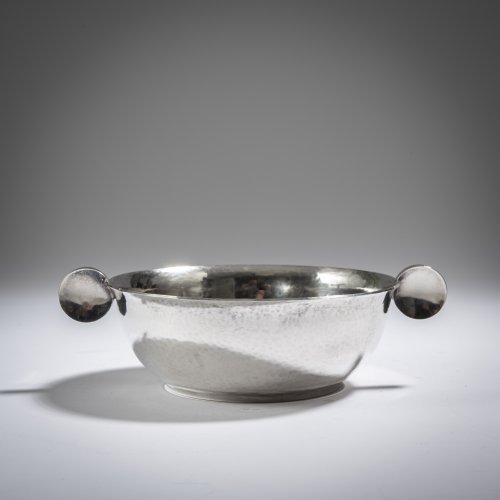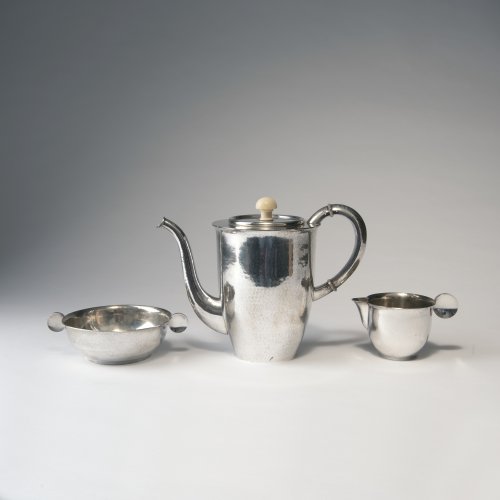Biography
Paula Straus (1894-1943) was one of the first women to be trained as a gold and silversmith and worked successfully in her profession. She began her formation as a goldsmith and silversmith in Schwäbisch Gmünd and at the Kunstgewerbeschule am Weissenhof in Stuttgart. After completing her master's examination in 1921 under Paul Haustein, she initially continued to work as a master at the school of applied arts and became well-known for her jewelry, which was also shown at exhibitions by the Deutscher Werkbund. In 1925, the silverware manufacturer Peter Bruckmann invited her into his company, and, over the next 8 years, she delivered over 100 designs for hollow-ware and religious receptacles that followed the contemporary taste of the 'Neue Sachlichkeit', that were functional and aesthetic at the same time. Eduard Reinacher wrote in an essay on Paula Straus designs in the Decorative Art magazine in 1929: "The factory thus gained (with the addition of Straus) a new force in the forefront, an artist who in her previous work had cultivated the aristocratic individualism of exclusive craftsmanship, but who, free from the narrowness of the gaze and beyond all snobbery, in the possession of the tradition of craftsmanship, the trends of the time and the inspiration from the new, prevailing tendencies that had always been open." Eduard Reinacher in: Decorative Art XXXVII (1929), p. 243. In 1933 the life of the designer took a dramatic turn. After being let go from Bruckmann, allegedly for economic reasons, she was employed by WMF in Geislingen for a few months. With the rise to power by the National Socialists, her work, like most of her Jewish fellow citizens experienced, became more and more difficult. She tried to make a living as a freelance goldsmith. After a failed attempt to escape to Holland, she was captured in 1942 and murdered in the Auschwitz concentration camp in 1943 at the age of 49.


